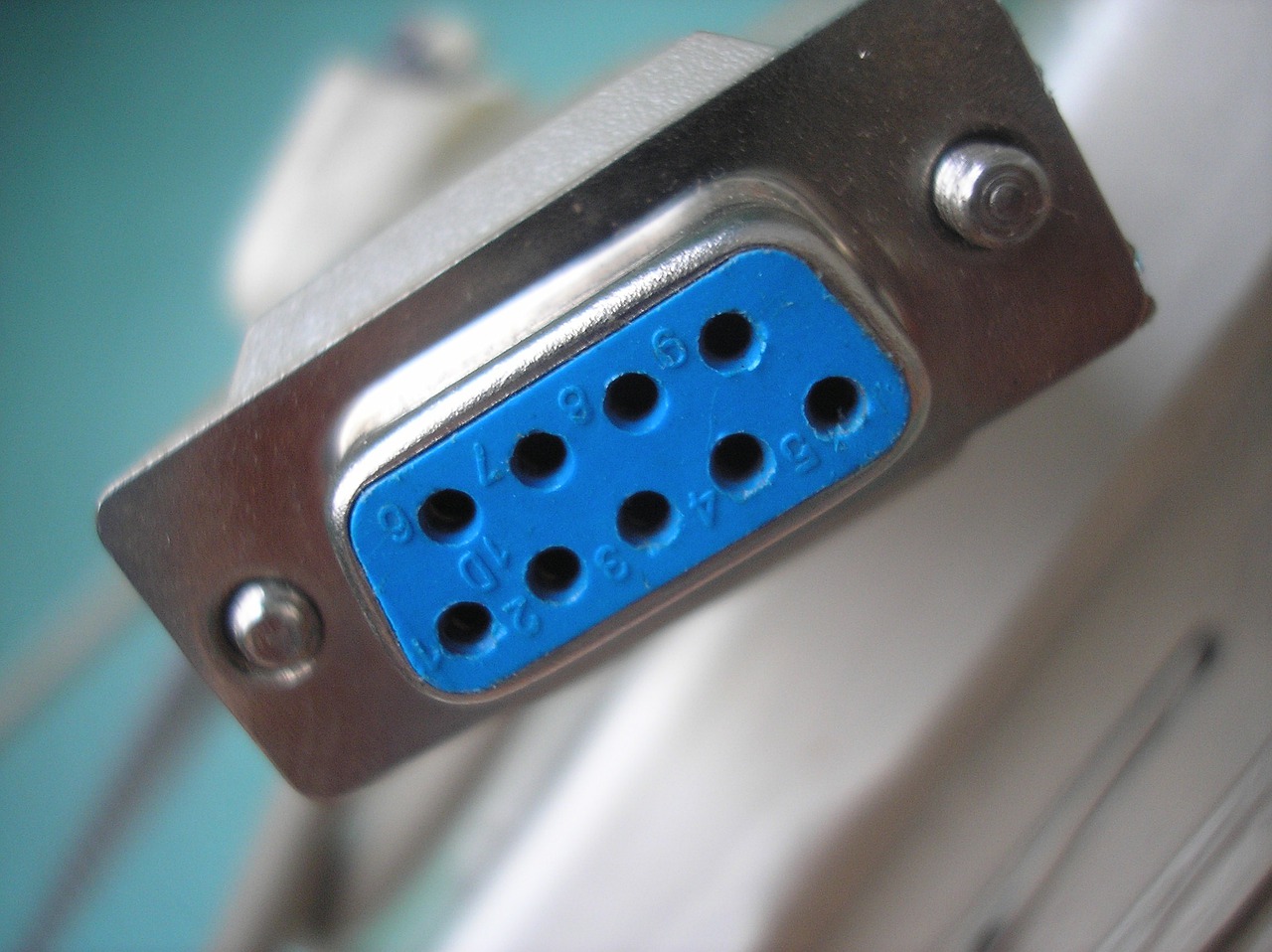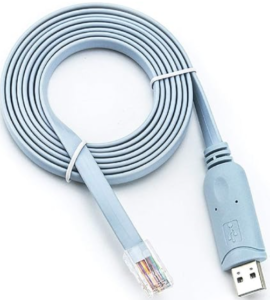Last updated on January 5th, 2023 at 03:56 pm
I created this post to complement my other posts, as some require using a device’s console port. Also, to help others with console or serial port connection options. I won’t go into great detail about the serial or console port with this post. I will cover some of the options available today to access the console port of a device using a modern laptop or desktop.
A Brief History
Many years ago, most network devices and laptops had a 9-pin port called a Serial Port. Some network devices today still have this port, and maybe in addition to a USB port. The serial or USB port is used for accessing the device’s command line. Most of the time, this is used for the initial setup. Many times this port is also referred to as a console port. With many devices these days managed via some GUI method, I usually refer to this as a console port.


On the device, this console/serial port has morphed over time. The port may be a 9-pin male or female, RJ45 female, USB Mini, or USB Micro. The RJ45 and USB are most common today.

RJ45 & 9-Pin
For a long time, Cisco devices shipped with a baby blue serial cable with RJ45 at one end and a 9-pin female serial at the other. I think this cable is still available but as an option. The RJ45 end is connected to the network device and 9-pin to the workstation side. This worked well when laptops or desktops commonly had 9-pin ports. As laptops or desktops dropped the 9-pin port, mostly in favor of USB, using this cable option became a challenge.

Serial to USB Converter to the Rescue
So with USB becoming common on workstations (a laptop or desktop) and the serial port less common, there was a need to connect the console/serial cable to a USB port, especially all the existing 9-pin serial cables. Even when the serial port was no longer available on workstations, the same 9-pin/RJ45 cable was still being provided with devices.
Many companies developed a converter for the 9-pin side, so these same cables can be used with workstations that only have USB ports. Some adapters connected directly to the USB port, and some had a short extension for the USB side. I own and have used both (pictures I took for this post), but I prefer the ones with the extension. I found the adapters without the extension as heavy when connected to the 9-pin side of the cable. If the port is hanging off the edge of a table or desk or moving around, I was concerned about putting stress on the USB port.


Here is the converter I have and still use if you prefer to use the 9-pin/RJ45 cable. https://amzn.to/3y3iDsR
All-in-one Console Cable
The all-in-one console/serial cable replaces the serial cable and serial to USB adapter. The all-in-one cable is a lighter and more compact option I have used for many years. This cable has logic built into the cable that converts USB to serial and works very well. Also, they are not very expensive, widely used, and widely available.

Here is the cable I use and have recommended to many. https://amzn.to/3I2q5ci
When connected to a Windows workstation, the cable will show as USB Serial Port (COM#) within Device Manager. In the example below, it is COM7, but it may be a different number on your workstation. This port will be used in console/serial software like Putty or SecureCRT.

In this example, I’m using SecureCRT, and when creating a new connection for Protocol, I select Serial and COM Port assigned in Device Manager. In this example, that port is COM7.

Wireless Console Option?
There is a wireless console/serial option I briefly used, and it is the Airconsole (https://www.get-console.com/shop/en/27-airconsole). If I were still a consultant (MSP – Managed Services Provider), I would have one in my tool kit as I find it practical for temporary use. I don’t see it as practical for long-term use as I am concerned about its reliance on wireless and inherent security. If wireless is needed, I recommend the device below, Perle Console Server. They specialize in this product, and the console server provides more features and security options.
If wireless is needed, I recommend the device below, Perle Console Server. They specialize in this product, and the console server provides more features and security options.
Another Option (Highly Recommended)
What if a device in production is no longer accessible via its management interface, commonly via the browser (GUI) or SSH (telnet should no longer be used)? When this happens, it would be nice to have access to this device’s console port to troubleshoot the issue. This is possible with console servers. These devices are dedicated appliances with one, two, to forty-eight ports that connect to the console port of a device (switch, router, or firewall) and make the device’s console port remotely accessible.
These console servers can be used in an emergency and also work great in a lab or remote office when configuring or deploying new equipment. I have required them in data centers and for new device staging/configuration for at least ten years. When I was a consultant, I carried a four-port unit in my bag and still have one for emergencies.
I’ve used a few console server vendors, but the best so far, which I have used for more than ten years and still use today, is Perle Systems.
Conclusion
Many sites discuss console/serial ports in greater detail, so my goal was to overview the connection types and what is commonly used today in place of 9-pin serial cables.
What’s the next console connection type? I’m not sure; maybe USB C? Possibly, in the future, devices will have built-in Bluetooth or Near Field Communication (NFC) that can be used for setup.
Let me know your thoughts.
References:
Dated, but still a good reference for Cisco console cables:
https://www.cisco.com/c/en/us/support/docs/routers/7000-series-routers/12223-14.html
https://www.perle.com/supportfiles/cisco_tech_note.shtml
Copyright © Packet Passers 2025
Palo Alto Networks IPSec Resource List:
https://knowledgebase.paloaltonetworks.com/KCSArticleDetail?id=kA10g000000Clh5CAC
Palo Alto Networks How to Configure IPSec VPN:
https://knowledgebase.paloaltonetworks.com/KCSArticleDetail?id=kA10g000000ClGkCAK
Palo Alto Networks IPSec Crypto Options:
https://knowledgebase.paloaltonetworks.com/KCSArticleDetail?id=kA10g000000ClYtCAK
Palo Alto Networks Documentation IPSec Crypto Profiles:
https://docs.paloaltonetworks.com/pan-os/10-1/pan-os-admin/vpns/set-up-site-to-site-vpn/define-cryptographic-profiles/define-ipsec-crypto-profiles.html
Cisco Next-Generation Cryptography:
https://tools.cisco.com/security/center/resources/next_generation_cryptography
NIST Guide to IPSec VPNs:
https://nvlpubs.nist.gov/nistpubs/legacy/sp/nistspecialpublication800-77.pdf
Very good article on selecting the best AES cipher:
https://isuruka.medium.com/selecting-the-best-aes-block-cipher-mode-aes-gcm-vs-aes-cbc-ee3ebae173c


